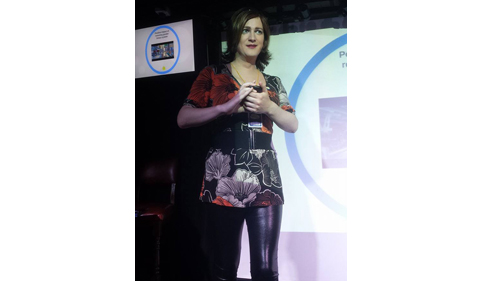Now that more of us are getting fully vaccinated, the small pocket of the world I’m living in is opening up a bit more (at least, In July 2021; nothing is guaranteed these days!). For the first time in far, far too long, I’ve been on a road trip with friends.
Everyone I know has had their own heavy shit to deal with, on top of living through a pandemic: jobs; income; living situation; giving or receiving care; bereavement. It’s been constant disruption and ongoing feeling of impermanence about everything. (I went through a lot of disruption a couple of years back; in some ways, it helped prepare me emotionally for life in the age of Covid.)
So when I had the chance to go on a fossil-hunting girly road trip, you’re damn right I took it!

We went to Eyemouth to potter about the beach and cliffs and have a picnic in the sun and try to ignore the noise of young families playing on the sand (because nothing wrecks a day out like the sound of small children enjoying themselves, am I right? No? Just me? Okay then, moving on…).
I wasn’t sure what my fossil-hunting outfit should be, so I raided my wardrobe’s recesses for stuff I haven’t worn much (but can still fit into), which had a summery, casual vibe. My pallid legs are a goddamn battlefield of ingrown hairs, but there wasn’t much I could do about that.

Eyemouth is next door to St Abbs (where I visited on a girly road trip before). It’s pretty small: an old fishing village with a harbour, an abandoned fort, and a museum. It can make for a pleasant place to stop by and take in the views from the clifftops.

Further back up the coast, at Barns Ness lighthouse by Dunbar, is a geologist’s wonderland of ancient rocks, layered and eroded by time. These rocks were last on the surface about 300-350 million years ago (give or take, but what’s a few million years between friends?). My travelling companions knew what to look for and pointed out the fossils that could be found here.
Forget trilobites and ammonites; forget mundane Tyrannosaur footprints or Liopleurodon bones – this is the opening of the gates to Carboniferous Park! [cue John Williams music] What you can find here are trace fossils – the remnants of trails made by tiny slithering things in ancient mud. And maybe imprints left behind by shells. But you know what, sod it: I found my own fossils and had a great day out with friends.

Catching up with people again after we’d all been frozen in social carbonite during lockdown was a funny experience: we’d all grown a bit older, but the time apart hadn’t changed the friendships and we had a great time catching up.
In 2021, I think I’m less bothered about things than I used to be. Maybe it’s an age thing; maybe it’s a result of the times we’re living through.
I’ve started growing my hair out (complete with funky grey streaks, like I’m about to fight in the Thunderdome). Partly because I’ve never had long hair and I want to see what it’s like (before it inevitably thins out and leaves my scalp looking like a cue ball); but also because just as I’m getting older, so’s my Twist stuff. The wig is starting to come apart a little bit more each time I take it out (I’ve had it since 2009!), and it might not be too long before I have to go out in Twist mode with my natural hair (I’m gonna dye that sucker; don’t expect to see Twist as a little old lady with grey hair any time soon!).
My workmates on video meetings have seen me grow my hair through various stages:
- rakish “Harrison Ford circa 1980”
- Frodo Baggins
- washed-up 1970s rock singer
- currently at Will Turner in Pirates of the Carribean length (“Ugh! Ponytail!”)
- give it a few months and it’ll be interchangeable between boy mode and girl mode
- if I get to 1980s-hair-metal-band length, I will have acheived my final form and will sing the song that ends the world (which could be any song, given my singing voice…)
Video meetings are also great because during the heatwave I’ve been able to work in my baking hot room in a skirt and nobody’s been any the wiser (or, in colder months, sporty leggings and pink hoodie). I don’t think I’d’ve had the confidence to do any of that when I was younger. I guess age helps me adopt a more laid-back attitude – a better perspective on what matters, what doesn’t, and when to just go with your sense of whimsy.
I’m slowly and steadily shedding my lockdown flab. I’m fully vaccinated. I’m making plans to go on more day trips and picnics with people. I have a garden with a firepit, and I’ve had friends around for food, drink, and toasted marshmallows. Everyone who’s important in my life is still in it. I’m going to carry on switching into ‘Twist mode’. Looking at what I’ve got, instead of what I might be missing, I can’t complain!
Where things go from here is anybody’s guess, but I’ve got a pretty decent starting point. I’m a 44-year-old guy and I reckon I’m having the bestest midlife crisis ever.
As David Bowie put it:
“Aging is an extraordinary process whereby you become the person you always should have been.”










